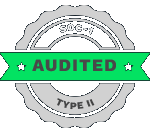Close-up of app icons by Brett Jordan
Some of the world’s most famous web applications and websites, including Wikipedia, Facebook, WordPress and Slack, run on the LAMP tech stack – that is, a stack of Linux, Apache, MySQL and PHP.
LAMP stack, introduced in 1998, was one of the world’s first open source software stacks, but that doesn’t mean it’s outdated; it remains a popular tool for web app development and website development.
In this article, we’ll be covering LAMP’s pros and cons so you can determine whether it is right for the app or site you want to build.
Table of Contents
Introduction: What is LAMP Stack?
The LAMP tech stack is powerful, stable and simple, and hence used by many businesses to develop websites and custom web applications. For web servers, LAMP is a crucial backend framework from the bottom up.
Before going further into LAMP solutions, let’s understand what a technology stack is: Individual components built on each other to make an application or web server environment.
The components needed for a stack include:
- Operating system (OS)
- Web server
- Database
- Script interpreter
With that, we can delve into what is included in LAMP architecture:
- Linux: The Linux OS of the server forms the base
- Apache: Baseline server software that allows the machine to serve and host content for clients
- MySQL: MySQL allows the data storage to be retrieved by web apps. While any relational database management system can be used, MySQL is the traditional choice for LAMP stack
- PHP: A server side language that allows web applications to be written and run. PHP integrates directly with MySQL
Common variants of LAMP stack include WAMP stack (which uses Windows instead of Linux) and MAMP stack (which uses macOS instead of Linux).
You’ll often hear the term “MEAN stack” thrown around when anyone is talking about LAMP stack. MEAN is an open-source bundle commonly cited as an alternative to LAMP. It is built in JavaScript and stands for MongoDB, Express.js, Angular and Node.js. Since it is newer than LAMP, it is more suited to modern web apps and websites.
However, MEAN comes with some disadvantages: it is not ideal for large-scale apps and difficult for novice developers to use, and , and JavaScript often makes sites slower on low-end machines.
Advantages of LAMP Tech Stack
While some of LAMP’s technologies, such as MySQL, can be considered outdated, there are many reasons why LAMP has remained so popular for web app and website development.
1. Flexibility
- While LAMP tech stack does use Linux as the operating system, it is possible to use other components with a different OS if you require. Some options include WAMP (Windows) stack, MAMP stack (Mac) and WIMP stack (Windows and Microsoft’s Internet Information Services).
- You can avoid lock-in, since LAMP is non-proprietary and open source. There is the flexibility of selecting the right components for particular requirements.
- Since Apache is modular, there are existing, customizable modules for various extensions. The modules range from authentication capabilities to support for other languages.
- Developers can choose between various database solutions, programming languages and web servers.
2. Efficiency
There is a substantial LAMP ecosystem, because it is an open-source stack that has been around since the late 90s. Your LAMP developers can build on what others have already done and make something unique to your business needs. Hence, you reduce development time.
3. Capability
LAMP is a solution for building web infrastructure, and LAMP developers can manage underlying databases, develop web content, and insert dynamic app features.
Other benefits of LAMP stack development include:
- Continuing, firm support
- Access to popular CMS engines such as Joomla and WordPress, since MySQL and PHP are supported by many hosting providers
- MySQL and PHP are easy to learn, so it is convenient for new developers
- Well-established encryption practices and secure architecture
Disadvantages of LAMP Stack Development
1. Lack of Separation
- It is crucial to consider your code in isolation. However, the most LAMP stack hosts provide shared hosting. While this is a cost-efficient replacement for dedicated servers, when combined with LAMP’s lack of mobility, it can cause challenges.
- A common scenario is for a site unrelated to yours to be overloaded with requests. This overwhelms their server and renders every other site hosted on the shared site inaccessible.
- For larger businesses, it is hence recommended to use dedicated servers. Small businesses may find the costs for dedicated servers unreasonable; these costs will have to be weighed against those of having one’s website down.
2. Library Captivity
- No control over libraries available. If you’re using a hosting provider, you will have to use the libraries that they’ve built PHP with.
- Getting a newer version of libraries is generally out of the question, since an upgrade will cause somebody else problems.
3. Limited Scalability of Infrastructure
LAMP stack scales with difficulty, and migration to better hosting is a challenge. You are left to get the database shared between servers and to ensure that the connections are secure. A common source of user frustration is figuring out how to get all the servers running on the same software.
Conclusion
We hope this article has given you an insight into whether LAMP tech stack is suitable for your business needs.
If you require experienced LAMP developers that can develop the app or website you want, BluEnt is just a click away. Our LAMP stack developers cater to Fortune companies, eCommerce companies, SMEs and funded start-ups. Browse our case studies to see how we’ve helped businesses like yours.
Ready to help your business grow with LAMP stack development? Contact us now!
Maximum Value. Achieved.



 How Much Does App Development Cost? A Budget Estimation Guide
How Much Does App Development Cost? A Budget Estimation Guide  Using Angular to Develop Mobile Apps Can Be a Game Changer for Your Business
Using Angular to Develop Mobile Apps Can Be a Game Changer for Your Business  Pros and Cons of the WooCommerce Plugin for Online Merchants
Pros and Cons of the WooCommerce Plugin for Online Merchants  Mean Stack vs LAMP Stack: Which One is Better for Your Business?
Mean Stack vs LAMP Stack: Which One is Better for Your Business? 
